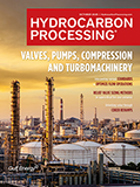Engineering & Design
Axens tapped for 3 new Vegan® licenses for SAF and renewable diesel production
Galp, LOKEN and SAFCO Venture Holdings Limited have selected Axens’ Vegan® technology for their hydrogenated vegetable oil and sustainable aviation fuel production facilities located in Portugal, Malaysia and Pakistan.
SICK and Endress+Hauser join forces in process automation
SICK and Endress+Hauser are bringing their strategic partnership in process automation to life: SICK’s advanced gas analysis and flow measurement technology is now an integral part of Endress+Hauser’s comprehensive instrumentation portfolio.
H2 Global Energy to develop a $6-B green ammonia project in Tunisia
A consortium led by H2 Global Energy signed a Memorandum of Understanding (MOU) agreement with the Tunisian government to develop a groundbreaking green hydrogen and green ammonia project. The total expected investment for this strategic initiative is $6 B.
Mitsubishi Chemical abandons 350,000-tpy MMA plant in Louisiana (U.S.)
Mitsubishi Chemical announced that it will not pursue a 350,000-tpy MMA Plant in Geismar, Louisiana" dated December 9, 2020, the Group had been considering the construction of a new Methyl methacrylate monomer plant in Geismar, Louisiana (U.S.), citing a failure to obtain long-term offtake contracts.
Accelerate the clean energy transition with the power of modular pilot and demonstration-scale plants
Modular pilot and demonstration-scale plants have emerged as crucial tools in accelerating this transition as the global community grapples with reducing carbon footprints and transitioning to cleaner energy sources. These plants are instrumental in effectively transitioning between laboratory research and full-scale commercial deployment, offering a pragmatic approach to testing, optimizing and improving new technologies in a controlled, scalable manner.
Hydrogen cyanide in amine systems
Mass transfer rate-based simulation has been used to study hydrogen cyanide ingress and accumulation in amine systems in unprecedented detail. In this article, the chemistry, prevention and possible mitigation using water washing arrangements and reflux purging are discussed quantitatively.
Brunei to Tokyo with hydrogen: A demonstration success story
The authors’ company has developed a novel technologya for the transport of large volumes of H2. This technology is based on the use of a liquid organic H2 carrier (LOHC) and utilizes both an “off-the-shelf” hydrogenation catalyst as well as a proprietary and now-proven dehydrogenation catalyst.
Plant maintenance and design
This article will review various maintenance activities, including emergency repairs, routine preventive and predictive maintenance, annual turnaround and computerized maintenance management.
Flare system design: Liquid pockets in flare headers
Flare and relief systems are the last line of defense against plant emergency overpressure and loss of containment. Therefore, the efficient design, management and maintenance of these systems are vital for safe operations throughout the lifecycle and operation of a plant. This article focuses on areas where major benefits can be achieved early in the front-end engineering design (FEED) stage of the project.
Salient points of a successful process plant execution
The aim of any successful project is to achieve consistent trouble-free operation at the rated capacity. Certain pinch points have been identified that must be addressed early in the process to avoid delays. These points are applicable for normal “stick-built” plants and not for plants with a high degree of modularization.

- KazMunayGas and Uzbekneftegaz partner to build 50,000-tpy linear alkylbenzene plant 11/17
- Verso Energy awards FEED contract to Rely for the DEZiR eSAF project 11/17
- Iran confirms seizure of tanker with petrochemical cargo headed for Singapore 11/17
- Allied Biofuels and Praj Industries sign MoU to build Central Asia’s largest ethanol refinery in Uzbekistan 11/17
- Asian gasoline margin spikes to highest since August 2023 11/14
- Lukoil-Moldova grants free use of airport fuel terminal to government amid U.S. sanctions 11/14




